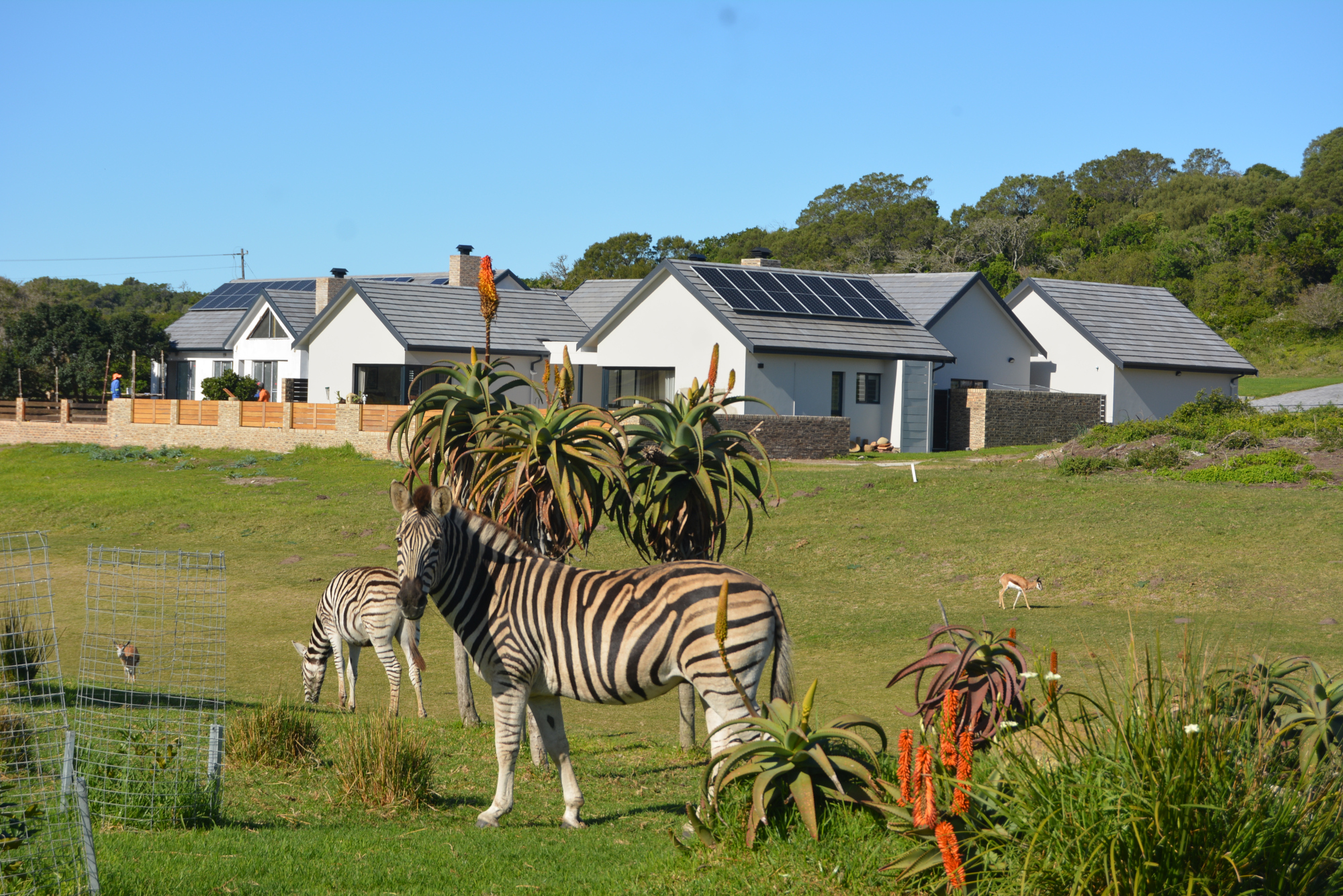With spring just around the corner, Sardinia Bay Golf & Wildlife Estate’s residents are gearing up for “happy hour” in a big way.
At the seaside Gqeberha estate, this translates to that magical time of day when the animals gravitate to the lawns to enjoy the last of the afternoon sun.
For those who live on the property, the sight of wildlife going about their lives only metres from their doorstep will never get old.
“Seeing my whole garden filled with springbok still leaves me in awe on a daily basis,” says resident Kim Broedelet.
“I feel incredibly blessed to be able to experience what I call my ‘natural lawn mowers’ – something others have to pay a fortune to see in wildlife reserves.”

While the joy of being surrounded by nature never changes, the animals do.
In November last year the estate welcomed its first impala herd, which currently comprises five individuals.
According to Sardinia Bay estate manager Hugh Wiblin a male and two females were introduced, with one of the impala ladies giving birth to a ram and female calf.
“The ram has now become a springbok and walks with them because he was chased out of the herd,” he explains, tong firmly in cheek.
“We are in the process of changing out a lot of the bulls and rams on the estate. If you don’t watch out, you can have incidents of inbreeding.”
Although there is capacity for more wildlife, Wiblin likes to have a population of between 50 and 60 at any one time.
Currently, 35 springbok, six zebra, seven blesbok, five impala, 15 bushbuck and two mountain rhebok roam the landscape, which boasts a lush-green hue after recent rains.
Contact me please
What has pleased Wiblin no end is the abundant birdlife evident in most sections of the 100-hectare estate.
In the past year scores of Knysna loeries (Turacos) have appeared, which he believes is the result of the extensive tree replanting project.
“I never used to see this many,” he says.
Another resident, Fawn Jopson, agrees that the feathered arrivals of all shapes and sizes are “incredible”, particularly the brown-hooded kingfishers that have appeared from nowhere.
From the window of the office she and her husband have built, she can take in all the wonders of nature as they unfold.
“I see little bokkies being born and the fun and games of all the animals. We call it ‘happy hour’ when all the animals run around when it’s warmer,” she chuckles.
“We have had several newborn springbok outside our garage. We also have a little mongoose that comes under the gate at the back and sometimes goes and sleeps under the deck outside our bathroom.
“It is a delight to watch animals grow.”
Jopson, who has lived on the estate since 2019, has become a real animal enthusiast, to the point that she has acquired a snake-catching device to move the reptiles out of harm’s way.
Broedelet has also changed her mindset from “screech and kill it” to “oh shame, let it be or rezone it” when it comes to the estate’s least understood residents.
The wildlife and general chat groups allow homeowners to quickly identify the different species and how to proceed in the event of coming across them.
“Learning to respect the environment in which we live has now become second nature and part of our daily lives and routine,” she says.
A self-confessed “happy snapper” these days, Broedelet takes photos of everything from dragonflies and birds to the resident buck and zebra communities.
She, too, has been fortunate to witness a springbok giving birth. Seeing the newborn standing up on its legs for the first time and “wobbling” its first steps is something she will treasure forever.
The zebra have become the estate’s “mascots” and the arrival of babies is always celebrated by residents.
“My husband, Wayne, and I didn’t know much when it came to wildlife; just what we saw on TV or on games drives. As most of our neighbours know, Wayne would say, ‘Oh, it’s a bird’, if anything that had feathers flew by.
“Now we both know a few by their correct names thanks to the passionate birdwatchers living on the estate.”
